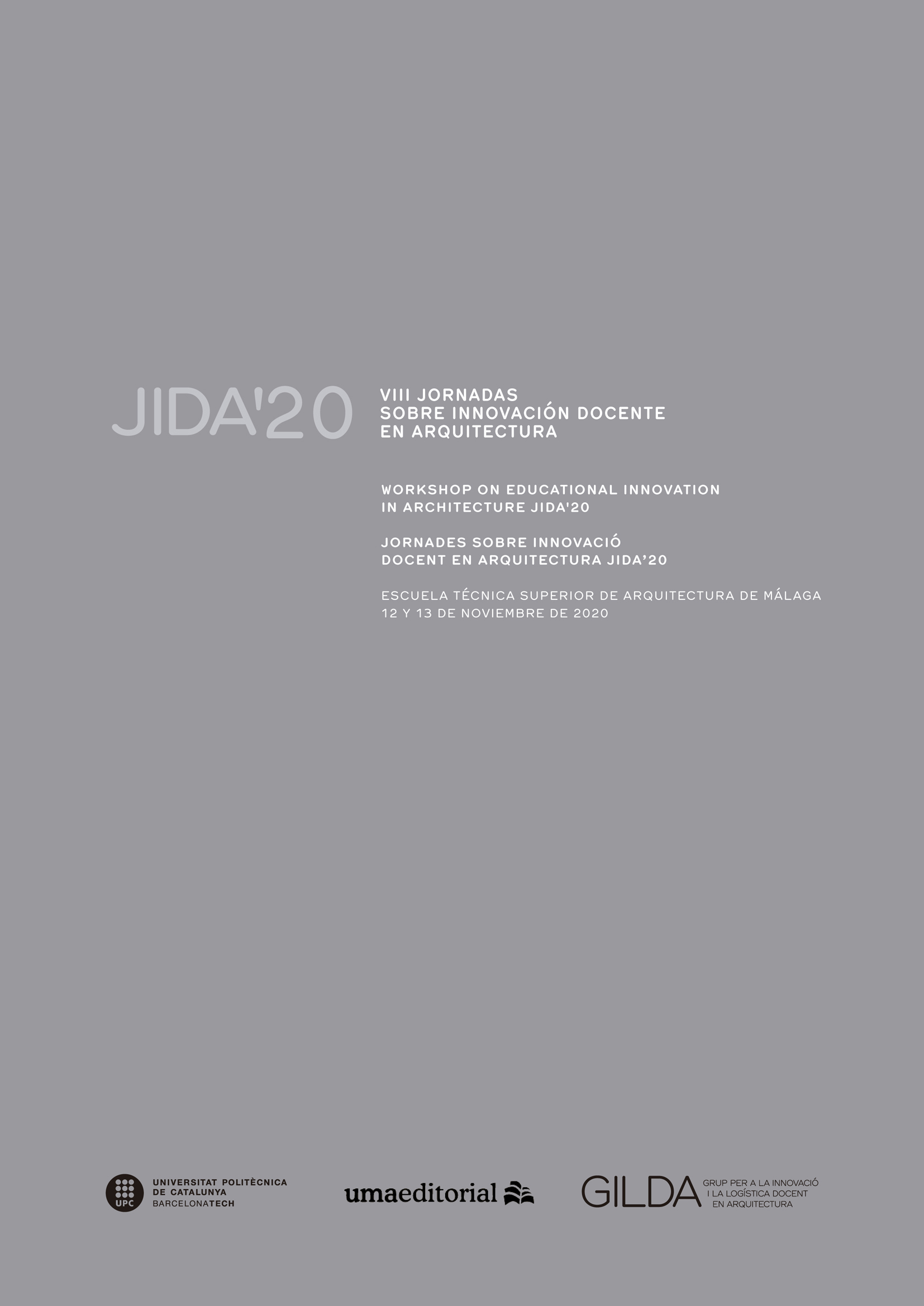Multi-Player City. La producción de la ciudad negociada: Simulaciones Docentes
DOI:
https://doi.org/10.5821/jida.2020.9428Resumen
‘Multi-Player City’ propone una exploración en torno a la idea de ciudad negociada. Su producción se gestiona en países centroeuropeos a través de herramientas como el ‘collaborative planning’, basado en la generación de una mesa de negociación en la que confluyen los diferentes agentes que intervienen en la ciudad para definir un planeamiento en común, negociado y sometido a crítica desde diferentes intereses, necesidades y demandas. El objetivo de esta comunicación es la formulación de una propuesta metodológica centrada en la utilización del juego como herramienta docente para la enseñanza de los valores del planeamiento colaborativo, con el fin de formar a arquitectos en modelos de urbanismo más democrático. La experiencia docente expuesta reproduce el planeamiento colaborativo del ámbito profesional en una simulación académica, transmitiendo al estudiante la desaparición del concepto de autoría, que se traslada del individuo al colectivo, reflejando el cambio del rol del arquitecto en la producción de la ciudad contemporánea.
Citas
BASABE, L.; ARENAS, E.; y PALACIOS, L. (2017). “Wildgarten Quartier in Wien. Ten Vectors for a Democratic and Sustainable Urban Development in Southwest Vienna†en PLANUM. The Journal of Urbanism, num. 35 Special Issue, p. 37-46.
DETERDING, S.; DIXON, D.; KHALED, R. y. NACKE, L. (2011) “From game design elements to gamefulness: defining gamification†en The 15th International Academic MindTrek Conference (09. 2011. Tampere, Finland).
CUNNINGHAM, C.; y ZICHERMANN, G. (2011). Gamification by Design. Canada: O’Reilly Media, Inc.
HEUVEL van den, D., RISSELADE, M. (2006). Team 10:1953-1981, In search of a Utopia of the present. Rotterdam: NAI Publishers.
HUIZINGA, J. (1951). Homo Ludens: A study of the play-element in culture. London: Routledge & Kegan Paul.
PRENSKY, M. (2001). Digital Game-based Learning. New York: McGraw-Hill
PORTUGALI, J. (2000). Self-organization and the City. Berlin: Springer Verlag
SOLÃ-MORALES, I. (1970) La ciudad y los juegos. Escuela Técnica Superior de Arquitectura de Barcelona.
TAN, E. (2017). Play the City. Games informing the urban development. Prinsenbeek: Jap Sam Books.
TAN, E. (2017). Negotiation and Design for the Self-Organizing City: Gaming as a method for Urban Design. Delft: TU Delft.
URQUIDI, A.; COLABOR, M. (2014). “Aprendizaje a través de juegos de simulación: un estudio de los factores que determinan su eficacia pedagógica†en EDUTEC Revista Electrónica de TecnologÃa Educativa, num. 47.
PLAY THE CITY. Games for Cities. <http://gamesforcities.com/> [Consulta: 20 de septiembre de 2020]
TWINPHENOMENA. Arenas, E.; Basabe, L. Y Palacios, L (2015). <https://twinphenomena.com/> [Consulta: 20 de septiembre de 2020]
MENTIMETER. Interactive presentation software. <https://www.mentimeter.com/> [Consulta: 20 de septiembre de 2020]






















